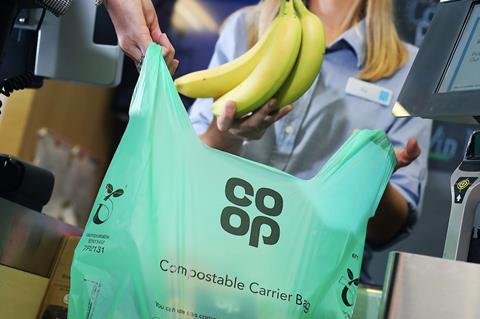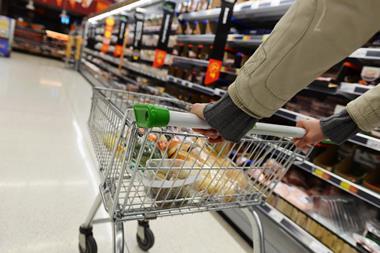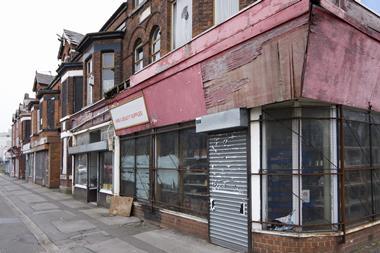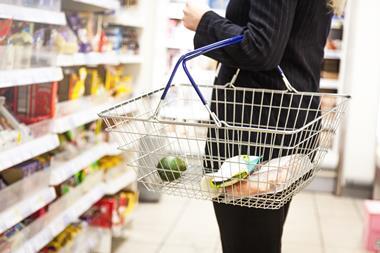Five years ago, the world woke up to our guilty plastic lifestyle. A pilot whale, poisoned by plastic, sounded the alarm as Blue Planet II summarised the devastation of human consumption on our environment and galvanised shoppers against plastic.
Another five-year milestone: in February 2018, I helped launch the world’s first plastic-free aisle in a supermarket, in Amsterdam. We hailed the 700 plastic-free products as a “landmark moment” in the global fight against plastic pollution. The aisle was all about finally giving people the freedom to choose whether they stick to the toxic status quo or shop plastic-free. It became a symbol of possibility and hope, and attracted global media attention.
I would love to say these past five years have been packed with achievements from our global CPGs and retailers. I also want to say our governments have stepped in, creating policy and empowering infrastructure to mitigate our plastic addiction and encourage significant investment in new materials of true circularity.
Unfortunately, I can say none of these things. Instead, the world tires of the continual tokenism of our industries and governments. This is reflected in the findings of the Ellen MacArthur Foundation from its November 2022 report, revealing many household names had utterly failed to achieve their plastic pledges, with virgin plastic use back to where it started in 2018.
But one very important thing has happened since that February in Amsterdam. The bar of acceptable change is far higher. As it should be, now we know what we know.
Five years ago, many people believed compostable materials were the future. We even included certified compostable materials in the plastic-free aisle, labelling them ‘plastic-free’ in order to help shoppers understand that these new plastic-looking materials were in fact created to be composted, not landfilled or incinerated with traditional plastic. And in hindsight, by doing that, we also became part of the problem.
Flash forward to 2023, and it has become clear compostables are not solving the crisis we are facing. Yes, there are good and bad uses of these valuable materials, but the fundamental system has not developed at the speed and scale needed to compost even those materials that are being correctly used as a bio-conduit, taking food waste into a food waste system.
The collection and rightful composting of food waste from every UK household remains another unachieved pledge. So the belief that the ‘compostable’ packaging solution is reaching its planned end of life is far from guaranteed. We wound up our PlasticFree certification scheme almost two years ago, realising it was adding to confusion in a material world that was mired in misinformation and bogus recycling statistics.
But there is hope. The world of innovation is moving fast, leapfrogging ‘less bad’ solutions to a better way entirely. A new material language is rapidly evolving. Nutrient materials that slip easily into nature’s never-ending toxin-free circle of growth creating nutrients creating growth creating nutrients, with no waste, ever. Materials that are made useful without the addition of harmful chemicals. Materials that nature knows how to handle without complex infrastructure. Materials that start well, stay clean and end well. Safe chemistry throughout the entire cycle has to be our goal.
Almost more importantly, the alarm bell is ringing on the extraordinary level of natural resources we are using, often for single-use. In the last six years, we have used more resource than in the entire 20th century, taking our children’s future materials, using them today and calling them GDP. Clearly we need to stop. And the solution for this is a shift to reusables, to prefilled permanent packaging using standardised componentry that, finally, does complete the circle.
If plastic was the material that broke our original system of reuse, repair, refill, share, rent, we are now in the renaissance that will catapult us into a fully regenerative manufacturing model. It won’t happen overnight, but we have to aim higher than ever before.
In turn, all this catalysed the process of substantially raising our own bar to create a robust standard of better materials. Through our new solutions platform, PlasticFree, we have built an empowering tool that learns from our past mistakes, creating a true springboard for change, championing true nutrient alternatives and fully circular systems. We quest a new level of transparency with all definitions and principles: a collective, collaborative knowledge hub to help demystify a confusing world that has hampered consensus on a clear direction. Delay that has cost our planet, and ourselves, dearly.
Every material evaluated against our new, robust standard starts but doesn’t end with the EU definition of plastic. No chemically modified polymers with toxic additives, regardless of feedstock, are deemed plastic-free. Together with materials scientists, we explore and define ‘chemically modified’ and demand safe chemistry.
But the most significant message we communicate through the hundreds of case studies, proof points and editorials is that we need to mitigate single-use materials altogether and fully understand what nature’s circular model of growth and nutrients can teach us. We cannot continue to take 1.75 planet’s worth of natural resources every single year, give nature back billions of tonnes of waste and call it ‘growth’. We need a fundamental shift, and we need it fast, if we are to have any future at all.




















No comments yet